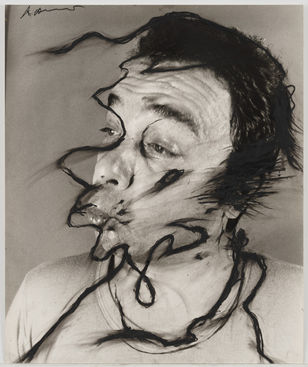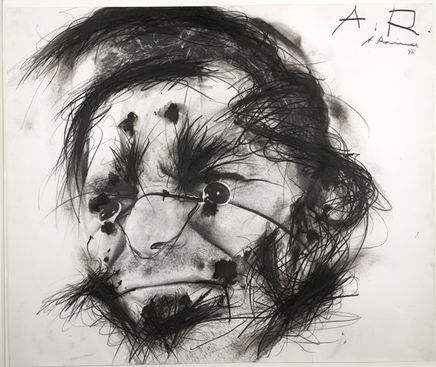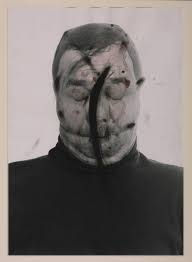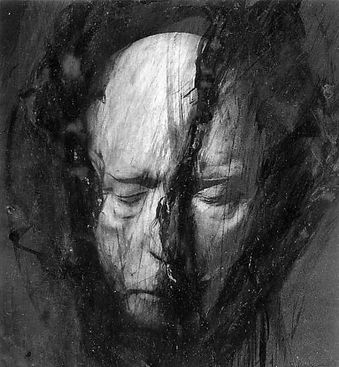For my further artistic practice I would like research the accelerating effect the implementation of digital technology and algorithms has on an individual.
For my further artistic practice I would like research the accelerating effect the implementation of digital technology and algorithms has on an individual.
Artworks and Processes
Artworks and Processes
Artworks and Processes
Artworks and Processes
Here is a heading
Ich bin ein Textabschnit. Klicke hier, um deinen eigenen Text hinzuzufügen und mich zu bearbeiten. Ich bin ein Textabschnitt. Klicke hier, um deinen eigenen Text hinzuzufügen und mich zu bearbeiten.Ich bin ein Textabschnitt. Klicke hier, um deinen eigenen Text hinzuzufügen und mich zu bearbeiten.Ich bin ein Textabschnitt. Ich bin ein Textabschnitt. Klicke hier, um deinen eigenen Text hinzuzufügen und mich zu bearbeiten. Ich bin ein Textabschnitt. Klicke hier, um deinen eigenen Text hinzuzufügen und mich zu bearbeiten.Ich bin ein Textabschnitt. Klicke hier, um deinen eigenen Text hinzuzufügen und mich zu bearbeiten.Ich bin ein Textabschnitt.
Here is a heading
Ich bin ein Textabschnit. Klicke hier, um deinen eigenen Text hinzuzufügen und mich zu bearbeiten. Ich bin ein Textabschnitt. Klicke hier, um deinen eigenen Text hinzuzufügen und mich zu bearbeiten.Ich bin ein Textabschnitt. Klicke hier, um deinen eigenen Text hinzuzufügen und mich zu bearbeiten.Ich bin ein Textabschnitt. Ich bin ein Textabschnitt. Klicke hier, um deinen eigenen Text hinzuzufügen und mich zu bearbeiten. Ich bin ein Textabschnitt. Klicke hier, um deinen eigenen Text hinzuzufügen und mich zu bearbeiten.Ich bin ein Textabschnitt. Klicke hier, um deinen eigenen Text hinzuzufügen und mich zu bearbeiten.Ich bin ein Textabschnitt.
Arnulf Rainer

© Arnulf Rainer, Untitled (Body Language), 1971-2
“I consider artistic creation to be first an inner monologue. A little like the dream continues in deep sleep, the covering of a painting is the continuation of this monologue in silence.”
– Arnulf Rainer
Art Informel
the subconscious
Overpaintings
filling a deeply felt emptiness
return to peace and invisibility
precise moments of facial tension
reproduction and extinction of myself
the impulse to perfect
dissatisfaction
“The Austrian artist Arnulf Rainer (b. 1929 in Baden) is regarded as a pioneer of "Art Informel", a movement which brought an intuitive form of lyrical expression into the field of abstraction. One of his early influences was Surrealism, and an ongoing interest in dreams and the subconscious imparts a mystical element to his work. He created his first Overpaintings in 1952, layering brushstrokes over existing artworks or photographs, and has continued to investigate the possibilities of this process throughout his career. Produced in dialogue with the underlying source material, which remains visible to varying degrees, the overpaintings play with notions of creation and destruction in a paradoxical homage to the original.” (Ropac)
After 1954, his style evolved towards Destruction of Forms. Rainer searched for new means of expression through painting, for which he developed radical new procedures from the very beginning. He used blackenings, overpaintings, and maskings of illustrations and photographs creating densely textured abstract works through the slow accumulation of considered brushstrokes. The viewer is left to face the mystery of what lies beneath. Exploring colour, emptiness, surface and light, his works are always embedded with ulterior qualities. His early overpaintings, were part of the artist’s strategy for filling a deeply felt emptiness. (Meta; Ropac; Tate 2)
“The organic act of creating is perhaps more essential than the completed painting; for this progressive participation in the obscuration or immersion of the painting, its gradual return to peace and invisibility […] could be compared to the contemplative experience of religious life.” (Rainer)
His intensive search for new ways of painting and the constant development of new artistic strategies, accompanied by performative works and extensive writings, make Arnulf Rainer one of the most influential living artists of the present. (Arnulf-Rainer-Museum)
Face Farces series
1969-74
Photogravure, etching and drypoint; Oilstick on gelatin silver print; Oil pastel and crayon on gelatin silver print; ...
"Drawing over photos of myself … gave me the feeling of realizing a reproduction of myself and a symbolic transformation and extinction of myself at the same time."
(Rainer - MoMa)
Rainer used oilstick scribbles and smudges to either exaggerate or eliminate the features portrayed in the underlying self-portrait photographs. He initially made his images in a train station photo booth late at night but eventually switched to professional photographers as they could better capture the precise moments of facial tension he wished to highlight.
At once celebrating and desecrating the body, Rainer's mixed-media technique has allowed him to "discover the subhuman in myself.” (Rainer in MoMa)
"I cannot delight in works of art, because in a painting straightaway I always see the weak points. The intuitive desire to cover up these very defects, to block them out one by one, until nothing else can be seen, this led me to paint on top of what already exists. It was for this reason, out of love and the impulse to perfect. However, I do see that the weak points are endless, even if the canvas is already completely black, because this process of overpainting creates a new and autonomous visual structure, and once again new weak points emerge, black on black. In this way I never stop working on my canvases. I am tormented by a constant feeling of dissatisfaction."
(Arnulf Rainer: Obras Recentes, p.18.)

© Arnulf Rainer, The Great Composers, 1973

© Arnulf Rainer, Sleep, 2007.
The ALBERTINA Museum, Vienna

© Arnulf Rainer, Barrier, 1974-75. The ALBERTINA Museum, Vienna
Arnulf Rainer | Early Work | 7 September - 12 October 2019 | Ropac Paris Marais
Art Informel
Art informel is a French term describing a swathe of approaches to abstract painting in the 1940s and 1950s which had in common an improvisatory methodology and highly gestural technique.
The term Informel describes no uniform style, but rather characterizes an artistic attitude that rejects the classical principles of form and composition as well as geometric abstraction. Constitutive is the "principle of formlessness" in the "field of tension between the dissolution of form and the emergence of form".
The term summarizes various abstract trends in European post-war art. According to Rolf Wedewer, it encompasses "two different modes of expression - the gestural and the texturologies". (Tate 1)
References
Arnulf-Rainer-Museum (no date) Arnulf Rainer. Available at: https://www.arnulf-rainer-museum.at/de/arnulf-rainer/ (Accessed: 22.05.22)
Metal (no date) Arnulf Rainer - and endless exploration of painting. Available at: https://metalmagazine.eu/en/post/article/arnulf-rainer (Accessed: 22.05.22)
MoMa (no date) Arnulf Rainer collection, work 35324. Available at: https://www.moma.org/collection/works/35324 (Accessed: 22.05.22)
Tate 1 (no date) Art informel. Available at: https://www.tate.org.uk/art/art-terms/a/art-informel (Accessed: 22.05.22)
Tate 2 (no date) Arnulf Rainer. Available at: https://www.tate.org.uk/art/artists/arnulf-rainer-1813 (Accessed: 22.05.22)
Thaddaeus Ropac (no date) Arnulf Rainer. Available at: https://ropac.net/artists/72-arnulf-rainer/ (Accessed: 22.05.22)








